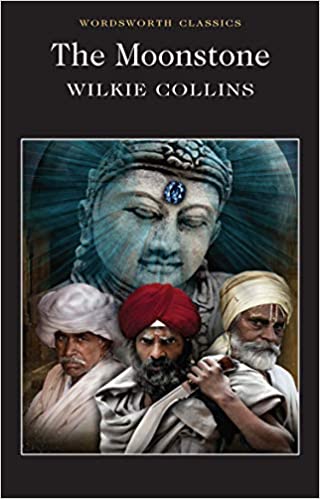I’ve been reading out of my typical genre lately for the local library’s Winter Reading Challenge, so I picked up this Gothic mystery, supposedly the first modern detective story ever written. The book was first published in 1868, so you do have to slog through some pretty archaic language and plot techniques, but overall, it’s a good read.

To begin with, you have all the typical tropes of a detective novel — because Collins invented them! — an English country house, a large cast of possible suspects, a locked-room mystery, suspicious foreigners, young lovers thwarted, and a convoluted plot Sherlock Holmes might have had to smoke a pipe or two to solve. I liked most of the narrators (Collins tells the story through several of these, each supposedly writing down their observations about the fateful robbery of the gemstone in the title, though not all of them. One, in particular, you’re expected to dislike intensely, and Collins did a good job of creating that dislike without doing more than stating the character’s actions and remarks in chronological order.
It’s a long book, though (over 400 pages in my Kindle adaptation) and the old-fashioned methods of storytelling do get in the way at times. There’s a lot of “Dear Reader” type comments, for example, and a good bit of exposition that could have been condensed and “shown” instead of “told.” However, if you have the time and inclination, you should read the book, if only to say you’ve read the first modern detective novel. The plot itself stands up over time, with a surprising twist at the end (and a not-so-surprising final pronouncement in a series of appendices). If you can get past the language, you’ll enjoy the story.




